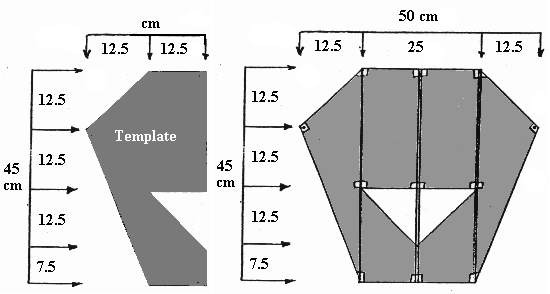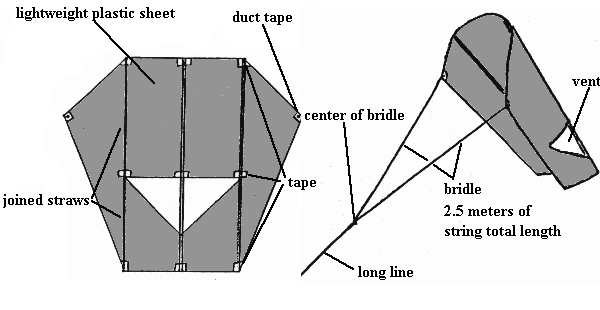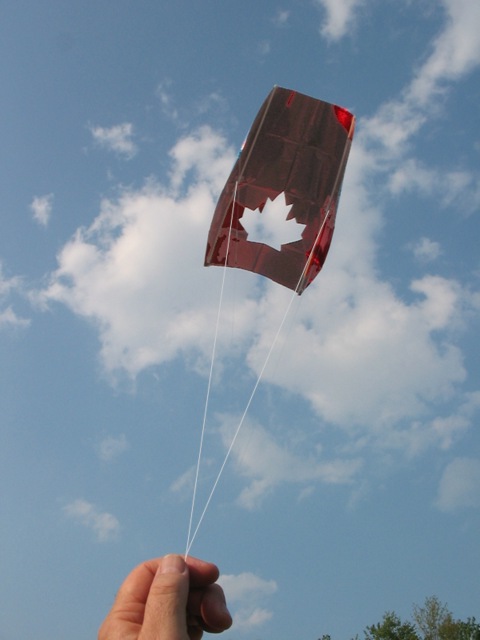
This project supports Ontario's science curriculum .
Building and flying kites is a wonderful hobby and a good way to learn about air, wind and flight. This type of kite is called a sled kite, it is constructed from a single sheet of light plastic, tape and straws. It is a reliable flier, performing well in most wind conditions.
This project supports many aspects of state or provincial curriculum. Schools have used this simple kite to support science and technology teaching in grades ranging from Kindergarten to Grade 6. For grades 6, 7 and 8 this kite can be used as the basis for a design challenge, see "Experimenting with Kites" at the bottom.
Supplies:


Kite Eating Trees:
Flying kites close to trees or buildings is difficult, this is because air
behaves strangely when it moves past objects, swirling in unpredictable directions
and taking your kite with it. An open field is the best place to fly a kite.
DON'T FLY KITES NEAR POWER LINES! Power lines are very dangerous!
Experimenting with Kites:
Try creating your own sled kite. Create a larger or smaller version
of this same kite. Try different shapes for the vent. Does a tail improve
the performance of your kite?
This project supports these strands from Ontario's Science Curriculum:
Energy and Control: Grade 2 – Energy From Wind and Moving Water
2s55- design and construct a device propelled by air (e.g., a kite,
a
pinwheel, a balloon rocket);
Matter and Materials: Grade 6 – Properties of Air and Characteristics
of Flight
6s35- design, construct, and test a structure that can fly (e.g., a
kite, a
paper airplane, a hot air balloon);

Construct this kite using the same dimensions as the standard sled kite above.
Instead of a triangular vent, cut a maple leaf at the same location.
Pattern for Maple Leaf - CorelDraw 10 File
Pattern for Maple Leaf - JPG image
Try using bright, plastic gift wrap for the material.
Eliminate the center straw.
More Projects at Hila Science Camp -
follow "Projects" link.